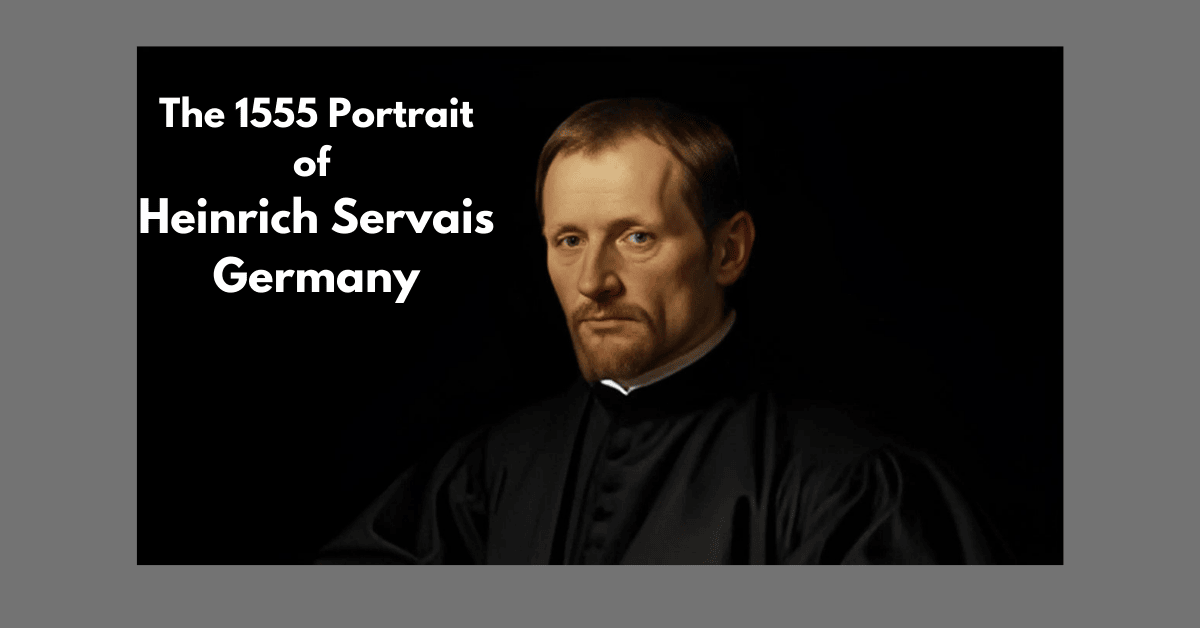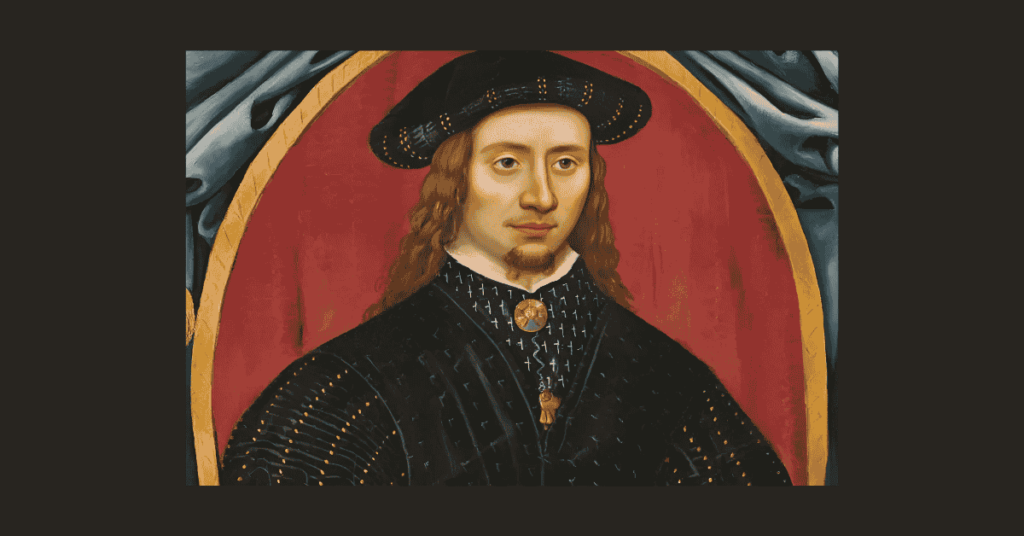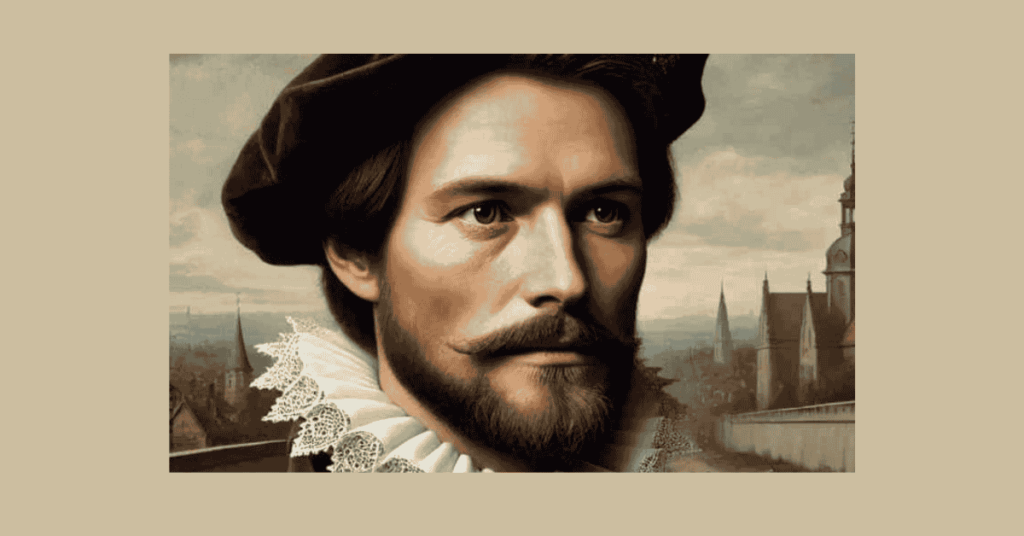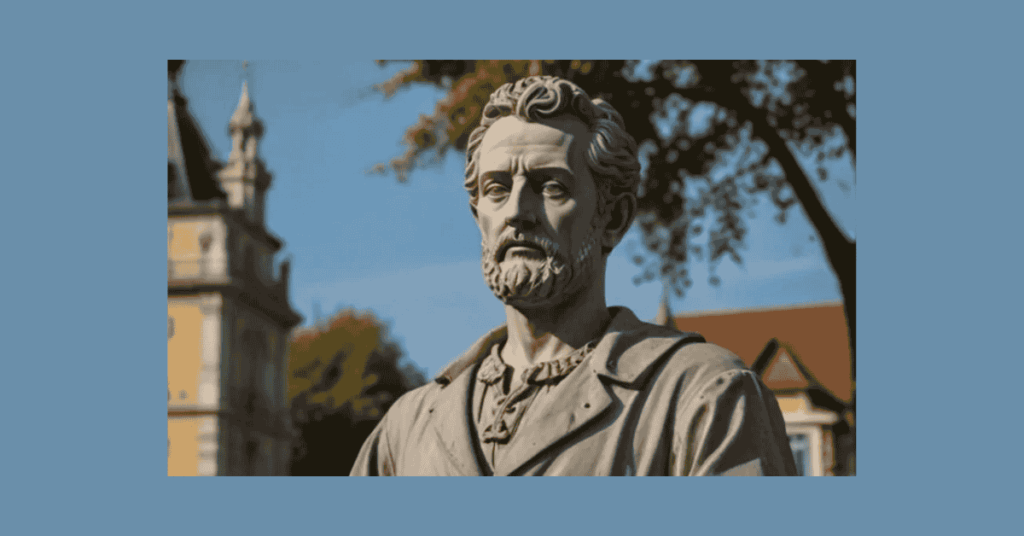The 1555 portrait heinrich servais germany stands as a significant piece of Renaissance art, showcasing not only the artistic advancements of the time but also the cultural and social dynamics of 16th-century Europe. Painted during a time of immense cultural revival, this portrait is more than just a visual representation; it is a symbol of wealth, status, and intellectual prowess. This article delves into the historical context, artistic elements, symbolism, and lasting legacy of the portrait, offering a comprehensive exploration of one of Germany’s Renaissance treasures.
Who Was Heinrich Servais?
Heinrich Servais was a prominent figure in 16th-century Germany, navigating the turbulent waters of the Reformation and the political intricacies of the Holy Roman Empire. Born into a time of significant change, Servais exemplified the traits of a man who could adapt and thrive amidst chaos. His social status and wealth enabled him to become a patron of the arts, allowing him to commission works that reflected both his personal values and the larger cultural currents of the time. Little is known about his early life, but records suggest that he was involved in the socio-political dynamics of his community, potentially serving in a public office or as a leader in civic matters.Servais’ importance extends beyond his personal achievements; he was a reflection of the broader societal shifts occurring in Germany during this period. As the Protestant Reformation gained momentum, individuals like Servais found themselves at the crossroads of tradition and modernity.
The Historical Context of the 1555 Portrait of Heinrich Servais
The Renaissance, which flourished between the 14th and 17th centuries, marked a shift in European art and thought. It was an era where humanism, individualism, and classical antiquity were celebrated. This period brought forth remarkable advancements in artistic techniques, including the use of perspective, chiaroscuro (light and shadow), and realism. The 1555 portrait heinrich servais germany reflects these shifts in a striking way.
1555 Portrait Servais Germany: Capturing the Impact of a Renaissance Scholar
Heinrich Servais, born in Germany in 1555, was a distinguished Renaissance figure whose influence spanned multiple areas of society. Although specifics about his personal life are limited, his contributions to academia and social affairs reveal a significant impact on his era. Servais was deeply involved in community development and local governance, championing educational reforms that laid the groundwork for contemporary public education systems. His commitment to advancing intellectual pursuits and societal betterment underscores his essential role in shaping the intellectual landscape of Renaissance Germany.In the context of his era, Heinrich Servais emerged as a key player in promoting educational and social changes. His active role in advocating for educational improvements demonstrates his forward-thinking approach and dedication to fostering knowledge and learning.
Read More: wedgewood homes kylie mcdougal
Exploring the Artistic Significance of the 1555 Portrait Servais Germany
The “1555 portrait Servais, Germany” transcends its role as a mere historical representation, emerging as a crucial cultural artifact that provides valuable insights into the artistic and societal values of its time. This portrait is distinguished by its exceptional realism and meticulous attention to detail, setting it apart from typical artworks of the period. The strategic use of deep red and gold tones in the painting not only conveys a sense of wealth and high status but also showcases the intricate craftsmanship and artistic conventions that were highly esteemed during the Renaissance.The portrayal of Servais is further enhanced by the expert application of chiaroscuro, a technique that employs a dramatic interplay of light and shadow to create a lifelike three-dimensional effect. This masterful use of light accentuates Servais’s thoughtful expression, effectively drawing viewers into a deeper contemplation of his intellectual and personal qualities. The portrait’s ability to capture both the physical likeness and the profound intellectual aura of Servais reflects the Renaissance era’s dedication to exploring and celebrating human complexity.
Art in 16th Century Germany
The 16th century witnessed a flourishing of artistic expression in Germany, influenced heavily by the Renaissance movement that swept across Europe. Artists began to adopt new techniques and styles, integrating elements from classical antiquity with a distinct German sensibility. Portraiture, in particular, became a prominent genre, as individuals sought to capture their likenesses and convey their social standing through art. The period saw the rise of notable artists such as Albrecht Dürer, whose meticulous attention to detail set a standard for portraiture that many would follow.In this climate of artistic innovation, the1555 Portrait Heinrich Servais Germany exemplifies the era’s trends while also showcasing the unique characteristics of German art. The use of oil paints allowed for greater depth and realism, enabling artists to depict textures, colors, and expressions with unparalleled accuracy. Additionally, the increasing emphasis on individualism in art mirrored the societal shifts brought about by the Reformation, where personal identity and belief became paramount.
Symbolism in the Portrait of Heinrich Servais
Like many portraits from the Renaissance, the 1555 portrait heinrich servais germany is filled with symbolic elements that speak to the subject’s identity and status. One of the most prominent symbols in the portrait is the gloves that Servais holds in his left hand. During the Renaissance, gloves were a symbol of wealth and status, often worn by the elite. Their inclusion in the portrait underscores Servais’s position within societyOther symbolic elements, such as the luxurious fabrics of his attire, also highlight his wealth and social influence. While there may be additional items in the background, such as books or documents (common in portraits of merchants and intellectuals), the simplicity of the portrait’s composition keeps the focus on Servais himself.
The Cultural Significance of the 1555 Portrait
The 1555 portrait heinrich servais germany is not only an artistic masterpiece but also a reflection of Renaissance society. During this period, portraits were more than mere representations of individuals; they were statements of power, prestige, and intellectual accomplishment. Heinrich Servais, through his wealth and influence, exemplified the ideals of the Renaissance—humanism, individualism, and the pursuit of knowledge.
The Influence of Heinrich Servais on Education
Heinrich Servais, Germany, 1555, believed education was crucial for societal progress. He advocated for establishing schools that promoted Protestant teachings and provided access to knowledge for a broader audience. His support for education was in line with the wider goals of the Reformation, which sought to empower individuals to read and interpret religious texts for themselves.
Heinrich Servais’s Challenges
Despite his many accomplishments, Heinrich Servais Germany 1555 faced significant challenges. His outspoken views made him a target of opposition from the Catholic Church, and he often had to defend his beliefs against accusations of heresy. Nevertheless, Heinrich Servais Germany 1555 remained steadfast in his convictions, continuing his work despite adversity.
The Legacy of Heinrich Servais: How the 1555 Portrait Captures a Turbulent Era
Heinrich Servais’s life and achievements vividly illustrate the multifaceted nature of 16th-century Germany, a period defined by intense religious upheaval, political fragmentation, and profound cultural transformation. As a key figure in this dynamic era, Servais’s contributions are deeply intertwined with the broader historical context of his time. This portrait stands as a testament to the era’s intricate historical tapestry, reflecting the significant changes that shaped European society.The 16th century was a time of dramatic shifts, prominently marked by the Protestant Reformation, which had a profound impact on both religious and political structures across Europe. Heinrich Servais emerged as a significant figure amidst these transformations, actively engaging with the sweeping changes that characterized the era.
The Life and Times of Heinrich Servais 1555 Germany
Heinrich Servais 1555 Germany was an important figure in 16th-century Germany, living during a time of great change. In 1555, Germany was filled with many new ideas about religion, politics, and art. People were starting to think differently about their lives and their leaders. Servais was part of the upper class, and his life showed how the wealthy lived during this exciting time.Born into a family of influence, Heinrich had access to education and opportunities that many others did not. His background likely involved trade, politics, or even religion. These roles were important because they helped shape the community around him. As the country was changing with the Protestant Reformation, Servais would have had to navigate these new waters carefully. His actions and decisions would reflect the challenges of this era.
The Global Impact of the Reformation
While Heinrich Servais Germany 1555 focused on issues within the Holy Roman Empire, the ideas of the Reformation spread far beyond Germany. His work contributed to a global movement reshaping European religious and political structures. The Protestant Reformation led to lasting changes in Germany and many parts of the world.
Where is the Portrait Today?
The journey of the1555 Portrait Heinrich Servais Germany over the years has been marked by various ownership changes and exhibitions in notable galleries. Today, the painting resides in a prominent museum, where it is part of a collection dedicated to showcasing masterpieces from the Renaissance period. Visitors to the museum are often captivated by the portrait, drawn in by the vivid representation of Heinrich Servais and the historical significance it embodies. As art enthusiasts admire the work, they are also reminded of the broader narrative of 16th-century Germany and the cultural currents that shaped it.
Portraits as a Window into 16th Century German Society
Portraits from the 16th century serve as invaluable windows into the society of the time, offering insights into the cultural, political, and social dynamics that shaped the era. The1555 Portrait Heinrich Servais Germany is no exception; it encapsulates the complex interplay of individual identity and societal norms. Through the careful study of such artworks, historians and scholars can glean information about the values, aspirations, and concerns of individuals in 16th-century Germany. Portraiture became a means of documenting personal stories and collective histories, providing a visual narrative that complements written records.
FAQs related to the 1555 Portrait of Heinrich Servais
Who painted the 1555 Portrait of Heinrich Servais?
The identity of the artist who painted the portrait is not definitively established, but it reflects the stylistic elements characteristic of Renaissance art in Germany.
What does the portrait symbolize?
The portrait symbolizes wealth, status, and intellectual prowess, showcasing Heinrich Servais’s position in 16th-century German society.
Where can I see the 1555 Portrait of Heinrich Servais today?
The portrait is housed in a prominent museum, part of a collection dedicated to showcasing Renaissance masterpieces.
How does the portrait reflect the cultural context of the time?
The portrait encapsulates the Renaissance ideals of humanism and individualism, illustrating the societal shifts during the Protestant Reformation.
What artistic techniques are evident in the portrait?
The portrait features exceptional realism, the use of chiaroscuro for depth, and rich colors like deep red and gold, emphasizing Servais’s high status.
In Shot
the 1555 Portrait of Heinrich Servais not only serves as a remarkable artistic achievement but also as a vital cultural artifact, encapsulating the complexities of 16th-century German society. Its enduring legacy continues to inspire appreciation for the interplay of art, intellect, and historical context during the Renaissance era.
Stay Connected: Truenetworth.org



